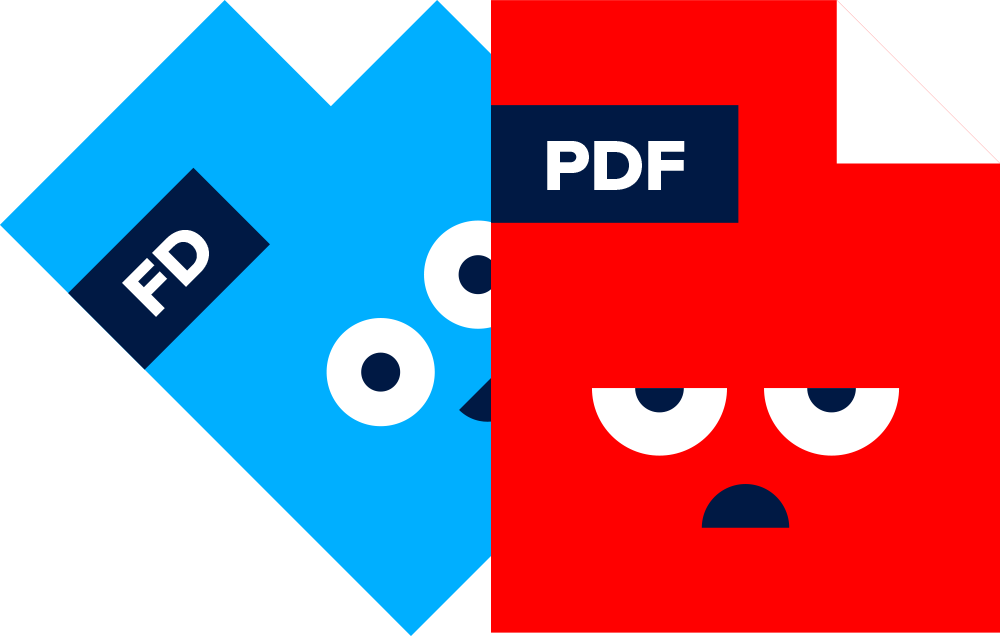Today’s marketing landscape relies heavily on content marketing. Companies use content to create trust and rapport with potential customers, and then nudge those people through the buyer’s journey.
Content marketing materials also fuel the entire sales and customer lifecycles. From sales and marketing collateral to educational materials that support customer success and turn customers into evangelists, content is the backbone of modern, growth-driven companies.
Top tip: How to improve your marketing and sales collateral management.
At Foleon, a core tenant of our content marketing success is what we call “writing on purpose.” Simply writing and publishing a blog post or two won’t get the job done. Writing must be targeted and should have measurable goals.
Part of writing on purpose is identifying the people you want to read your content. This targeting has always been an essential part of marketing. Without it, you put in far more effort for far less return. Over the last decade, online data and analytics has made content targeting much easier.
Unfortunately, marketers still struggle to make real use of their data for effective content targeting. It remains in the realm of the vague and mysterious to many.
In this post, we’re going to dive into one of the best tools you have at your disposal: the buyer persona. By the end of this post, you’ll understand how and why personas are essential to your content marketing efforts and you'll have the tools to begin creating your own.
What is a persona?
To put it simply, a persona is a semi-fictional person created to represent your ideal customer.
When you identify a potentially lucrative market, a persona helps you write as if you’re addressing someone you personally know from that market. They have a name, a face, a personality, goals, and more. Writing this way helps you stay authentic and helpful.
Companies often create multiple personas because they target more than one market. For example, some of the personas we use at Foleon include Marketing Marge, Communications Corbin, and Designer Devin. These three characters represent some of the customer segments we focus on.
Each character has different goals, challenges, and backgrounds. They get their news from different places and practice different hobbies outside of work. Consequently, they respond to different writing styles and topics.
Creating content with a specific person in mind — one that personifies your target audience — is far more effective because you can tailor your subjects and tone of voice to what you know will resonate with them.
Personas should be central to any content strategy, and along with concepts such as the buyer’s journey, they should become the starting point for anything you write.
So how do you go about creating buyer personas?
Starting with the big picture
The rise of digital marketing has given companies massive amounts of data to explore. Extracting data from the social profiles of your (potential) customers is simple, and in many cases can be automated to enrich your CRM with information regarding job titles, industries, interests, and much more.

In addition, Google Analytics and Adwords provide a steady stream of information about traffic to, and behavior on, your website.
Examining this data allows you to identify commonalities among your most valuable visitors, which is the first step to creating personas for your content marketing.
We recently put up a great blog post about using the Segments tool in Google Analytics. This allows you to compare and contrast portions of your data and understand relationships among the traits and behaviors of your website visitors. How well do visitors with different demographics convert and eventually become customers? Segments can help you figure that out.
The correlations you discover will reveal a lot about who your most valuable visitors are and what they look like.
Imagine if you knew that prospects who use one specific technology stack or have more distributed offices also happen to be the ones that eventually become customers? You could forget about those who don’t fall into those categories and win a lot more new business.
Analyzing the data you already have available is the first step in identifying your most valuable visitors and will provide the basis for the personas you will develop.
Getting into the details
After identifying commonalities that define the customer segments where you have the most potential for success, you can begin drilling down with personas.
Often, the job titles to which you want to market should be somewhat obvious if you already have customers. You don’t need complex data tools or math to see patterns in who responds positively to your salespeople or who gets the final say in whether or not to purchase your product.

The people in those job titles, within the market segments you previously identified, are those who you want to target with your content marketing. In all likelihood, that will narrow your target to just a few groups of people. The fictional archetypes representing those groups of people will be your personas.
The craft of character
Imagine you’re writing a letter. What sounds easier: addressing a group of people who have some vague commonalities or addressing an old friend? Making your audience real, personal, and specific helps you create powerful copy and, in turn, rapport with potential customers.
You don’t really have to pretend you’re writing an old friend to construct a persona (though if that works for you, go for it). What you do need to do is build fictional characters, based on individual people, who are your target group personified.
These characters should have:
- Job titles
- Day-to-day responsibilities
- Hopes and dreams
- Pains and fears
- Common objections to sales conversations
- Age
- Familial situation
- Educational level
- Political affiliations
- A location of residence
- and whatever else you deem relevant
Try to flesh out these characters as much as you can. The trick is to make them specific enough to be useful, but not so specific that they might exclude important prospects.
Understanding these details about your personas will help you create messages that speak to them on a personal level. A recent article on Medium even demonstrated why knowing a character’s favorite songs helps to understand their psychology.
Don’t assume that you know them intimately from the get-go. Rather, go through all the steps of character creation we discuss here. There’s a good chance you’ll be surprised at what you discover.
A word on style
These characters are your company’s target personas. They’re the foundation for the rest of your marketing and outreach activity.
After completing your persona outlining, it’s wise to begin your research on style. In another post, we’ll delve deeper into creating a style guide and even give you a template to get started.
What you can do immediately upon finishing work on your personas is find some of what’s already being written by or for similar people online. By understanding your personas’ job titles and industries, you can identify real people online who are aligned with them. If you’re lucky, you’ll find that some of these real people have published some writing themselves, such as blog posts on LinkedIn.
Even if they haven’t, there are certainly others already writing with these people in mind. Whether it’s industry blogs, marketing materials, or something else, that writing will give you a peek into the style associated with your new personas.
Take in the style they use. Is it conservative, fun, technical, or solution oriented? Does it use long, in-depth paragraphs or short, journalistic ones?
All of this will help you develop a writing style appropriate for your new personas. The next step is deciding what exactly to write.
Deciding on topics and formats
Choosing the appropriate topics and formats for your content is as important a component of your strategy as anything else discussed here.

The number one thing to keep in mind is that you’re trying to entice your target audience to come to your website and eventually convert to paying customers. What issues do your personas face in their daily lives and what materials will help them to overcome those issues?
For each persona, take their hopes, dreams, fears, pains, barriers, and hesitations, and cross-reference those with your unique value propositions. This will allow you to easily generate a list of topics.
The question of helpfulness extends to both topic selection and format selection. Topics and formats may be ones that are already common for your target industry. However, it’s important to put yourself in your persona’s shoes and question whether there may even be a content gap for the industry that is waiting to be filled.
Perhaps there are no technical, research-based white papers in this industry, even though one would be helpful for and welcomed by the industry’s workers. This is a good example of why it’s useful to be intimately familiar with your personas.
Conclusions
The targeting possibilities for marketers are endless. You could lose yourself in the data, trying different models or testing ad nauseum.
Eventually, you have to let trial and error take over. Your insights are worthless if you don’t turn those into action, and you’ll learn more from your struggles and triumphs anyway.
However, the planning stage is essential. Personas will make your content marketing far more effective. Investing time and effort into examining your data, building personas, appropriately adapting your style, and producing persona-tailored content will pay off.



